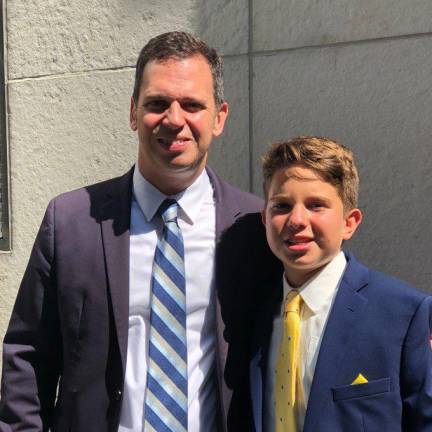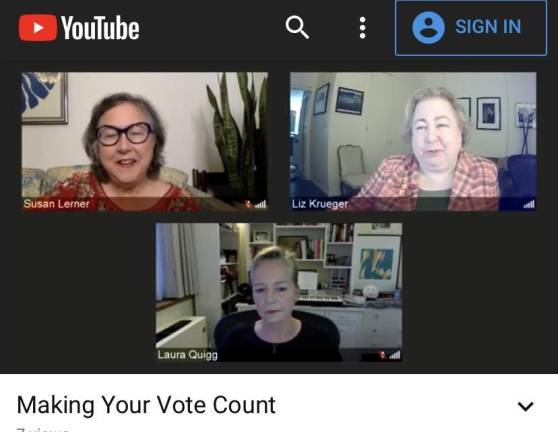A Push for Early Voting
As a solution for a smoother Election Day


With just a handful of weeks to go before November’s general election, officials are trying to figure out how to get out the vote amid the ongoing pandemic. After a botched primary election due to an influx of absentee voters the Board of Election was unprepared to handle, and anxiety about the current state of the U.S. Postal Service, the focus has turned to early voting as a solution for a smoother Election Day.
While 400,000 New Yorkers voted absentee by mail during the June primary, only five percent of all voters took advantage of early voting in the primary. Upper East Side Assembly Member Dan Quart wants to expand that number of early voters by increasing the number of polling places where New Yorkers can vote before Nov. 3.
In total, there are 16 sites where Manhattan residents can vote early between Oct. 24 and Nov. 1. The Upper East Side has two early vote polling places, including Robert Wagner Middle School and Jackie Robinson Complex. Quart says the city and the Upper East Side need to create more by opening up cultural institutions, including museums, art galleries, and historical societies as early voting sites.
“With Madison Square Garden and the Barclays Center opening their doors to voters, why have our cultural institutions shuttered theirs?” Quart said in a statement. “Expanding early voting was a no-brainer under normal circumstances but today, with a global pandemic raging and the US Postal Service under attack, it is an absolute necessity.”
In the past, however, these cultural institutions have declined to do so. In 2019, dozens of them rejected the Board of Education’s request that they open their doors to be early voting sites. Only public schools are required to comply with the city in opening their buildings for early voting.
“We have to move away from a place where we are now, which is that it’s only the responsibility of public schools,” said Quart. “We work with our partners at museums, cultural institutions and other similar institutions to find ways within their space that they can become early voting sites.”
“Foster Civic Engagement”
Quart, who serves on the Tourism, Parks, Arts and Sports Development Committee, said he’s optimistic this year that here in 2020 cultural institutions will comply with the BOE.
“With the integrity of our elections on the line, our cultural institutions must not evade responsibility but step up and foster civic engagement,” he said.
As for absentee voting in the general election, Susan Lerner, the executive director of the government watchdog group Common Cause New York, says much has improved since June. In a Town Hall event with State Senator Liz Krueger, Lerner said the BOE has improved in processes to apply for absentee ballots, track ballots and count ballots in the interim.
“I’m sure constituents remember the confusion around the June primary,” said Lerner. “A lot of that was due to the fact that changes had to be made very, very quickly. So some people were frustrated in the delays in getting their absentee ballots, others were frustrated in mailing them back and not being counted. A lot had to do with the short amount of time the Board of Elections had to make a massive change.”
The BOE will be putting a big red X on the signature line of absentee ballot envelopes so voters don’t miss it this time around. Additionally, clearly marked drop boxes will be places at all polling placed and voters will now be able to track their ballot and know when its arrived at its destination.
For the first time ever, voters in New York will be able to “cure” a ballot’s defect in the case of something like a missing signature so that the vote is not disqualified.
High-Speed Sorting Machines
The legislature also decided that any ballot to arrive the day after Election Day without a postmark will still be counted, which had been a big issue during the primary. The BOE has also purchased a number of high-speed sorting machines, which should cut down the amount of time needed to count ballots. It took nearly six weeks for some primary races to be certified, including Congresswoman Carolyn Maloney’s victory over challenger Suraj Patel.
One of the most important reforms that the BOE will need to implement is sending absentee ballots in a timely manner so that voters have enough time to meet the Election Day deadline. A reported 34,000 absentee ballots were sent out just one day before the June 23 primary.
Despite the reforms, Quart said he didn’t have confidence that the BOE has improved much on its election processes.
“We will be giving them more tools and more money for the November elections than they had in the June election so we’re expecting better results, but based upon June, I’m not completely confident that it’ll go off seamlessly,” said Quart.
Early voting in New York begins Oct. 24. To find dates, times and where you can vote early, visit: vote.nyc.
“Expanding early voting was a no-brainer under normal circumstances but today, with a global pandemic raging and the US Postal Service under attack, it is an absolute necessity.” Assembly Member Dan Quart